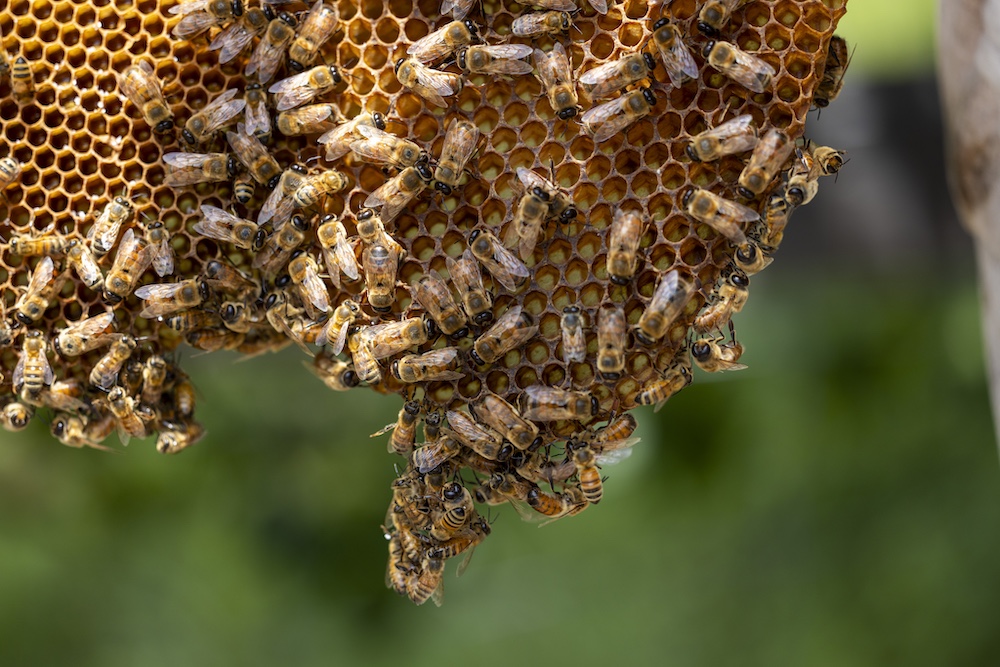By Chowning Johnson &
Sharon Omahen
University of Georgia
If you go to a hospital to have surgery, you want the
anesthesia
to work. Two Georgia high school students in a University of
Georgia internship program have made sure it works for chickens,
too.
Jack Varner and Kelli Clifton participated in the UGA Young
Scholars Program in 2001 and 2002. Their research on the
effectiveness of three anesthetic regimes on chickens was
published in the peer-reviewed journal, “Lab Animal,” in May
2004.
The Young Scholars Program was started in 1999. The six-week
summer program, matches high school students with scientists in
the UGA College of Agricultural and Environmental Sciences.
Introducing students to common ag surgeries
Roger Wyatt, a UGA professor emeritus of poultry science,
helped
Varner and Clifton design their experiment. He wanted to
acquaint
them with simple small-animal surgeries.
Chickens are commonly used in scientific research
laboratories,
Wyatt said.
“We use chickens in our research at UGA because there are
several
simple surgical procedures students can perform easily on them,”
he said. “You can teach a student to castrate a chicken, a
common agricultural procedure, and do so in a laboratory. It’s
analogous to doing the same thing to a steer.”
Both students showed interest in pursuing careers in
veterinary
or human medicine. “So this project was a perfect fit,” he
said.
Until this experiment, not much was known about regimes that
produce a surgical level of anesthesia for chickens and not hurt
them.
With the help of UGA veterinary student Stacy Poulos, they
found
that chemicals commonly used in animal anesthesia didn’t put
chickens in a state in which they couldn’t feel pain.
The toe-pinch test revealed the problem
“We uncovered this in the same way a doctor would with a
human
patient,” Wyatt said. “We put the chicken under, did a toe-pinch
test and saw a reaction.”
They tested Ketamine-xylazine and ketamine-diazepam,
injectable
anesthetics, and Isoflurane gas, an inhalant anesthetic. All are
used in surgery for mammals.
They checked the chickens’ heart rates, respiration, body
temperatures, blood glucose and response to moderate toe-pinches
at timed increments before, during and after the anesthesia
use.
The ketamine-xylazine and ketamine-diazepam didn’t achieve a
surgical plane of anesthesia for the chickens. Ketamine with
xylazine could even kill the chickens.
Isoflurane produced a safe surgical plane of anesthesia for
the
chickens.
Wyatt, Poulos and J. Roger Broderson, a former UGA director
of
animal care and use, helped Clifton and Varner prepare the
manuscript that was published in “Lab Animal.”
Few vets see pet chickens
“During the manuscript’s review process, we did find a few
veteran veterinarians that knew the standard anesthesia process
didn’t work on chickens,” Wyatt said. “The chemicals that were
being used work just fine on rats, cats, dogs and birds like
pigeons and parrots. You just don’t find many veterinarians out
there performing surgery on pet chickens.”
In the summer of 2002, Clifton and Varner reapplied to the
YSP
and were reassigned to Wyatt. That summer their research was
applied in Wyatt’s laboratory. Isoflurane was used to perform
minor research surgeries on chickens.
Isoflurane is expensive to use because you need an anesthesia
machine. But it’s more humane for the chickens and better for
research. “The UGA avian genetics group is doing remarkable
research using this method,” he said.
YSP can be an invaluable learning experience for high school
students, he said. It often helps them decide what they want to
study in college.
“The Young Scholars Program gives students an opportunity
that
takes them from start to finish with a tangible product at the
end,” he said.
Varner is now a sophomore majoring in math education at UGA.
Clifton is a sophomore majoring in health policy and
administration at the University of North Carolina.
(Chowning Johnson is a student writer and Sharon Omahen a
news
editor with the University of Georgia College of Agricultural
and
Environmental Sciences.)



